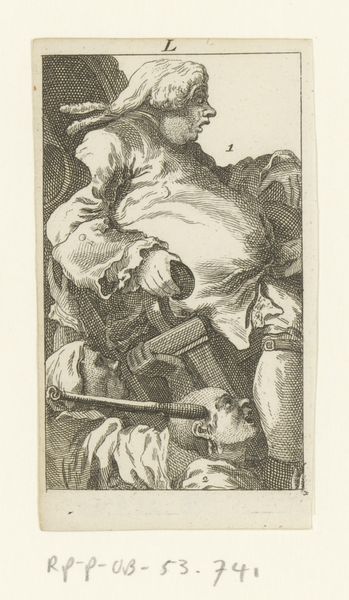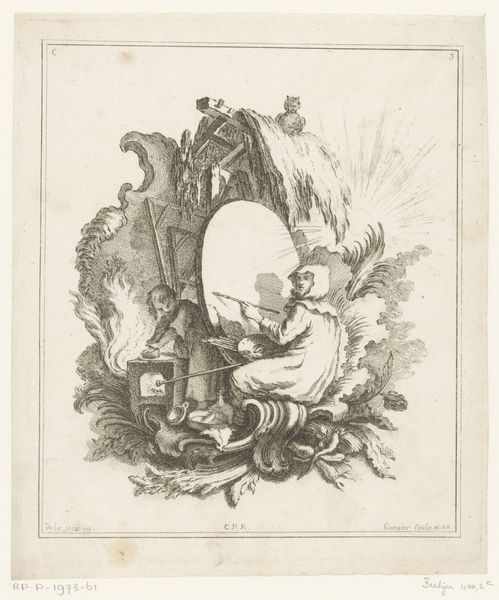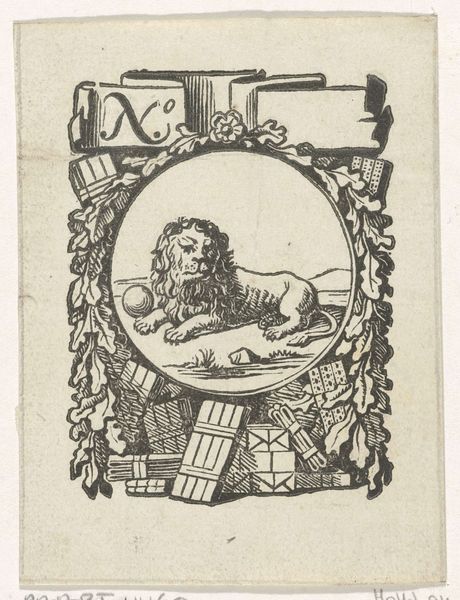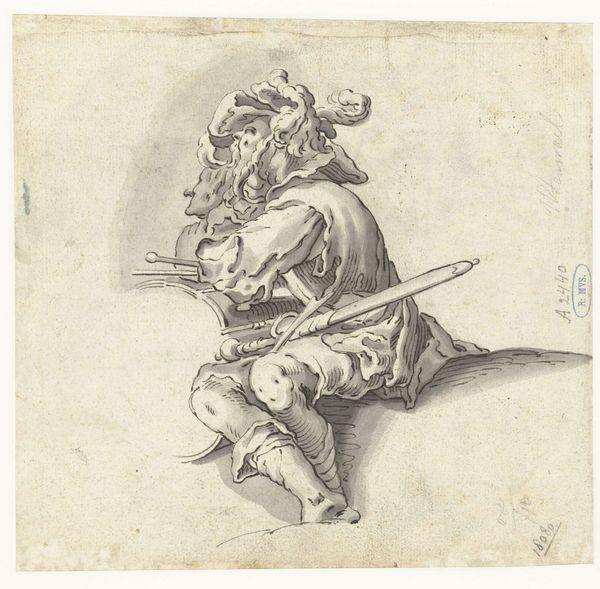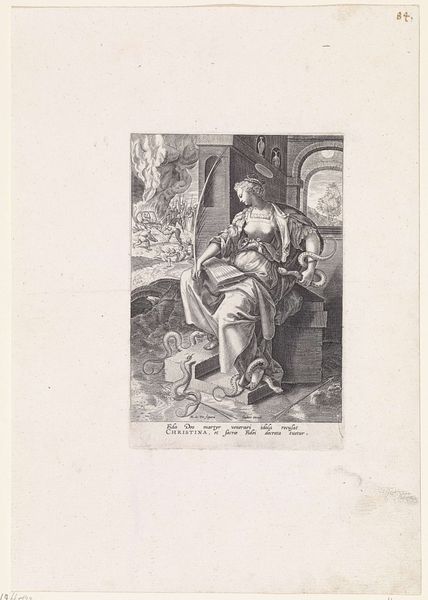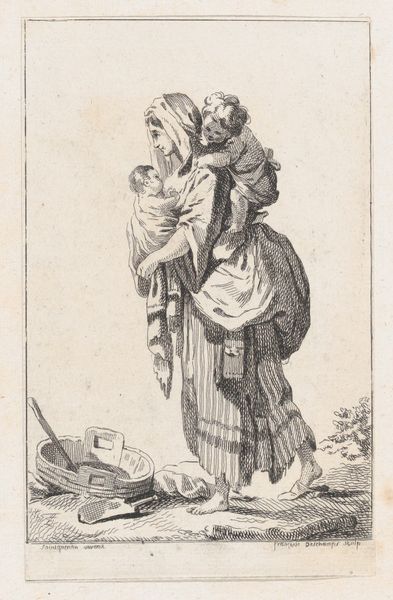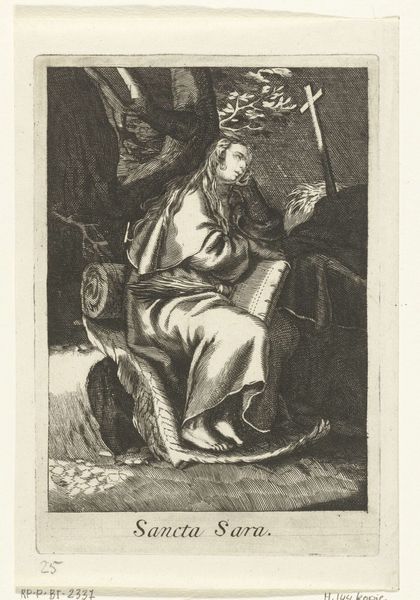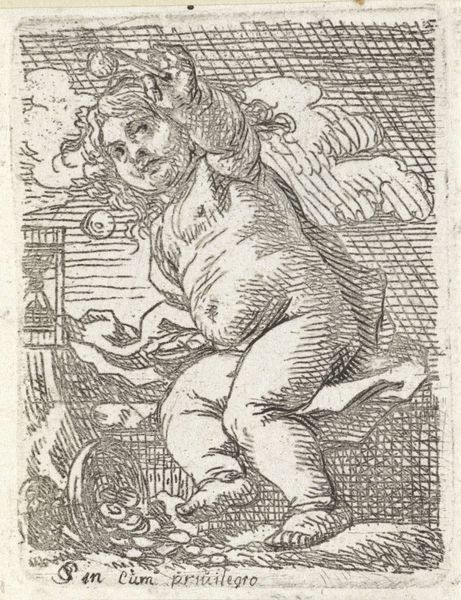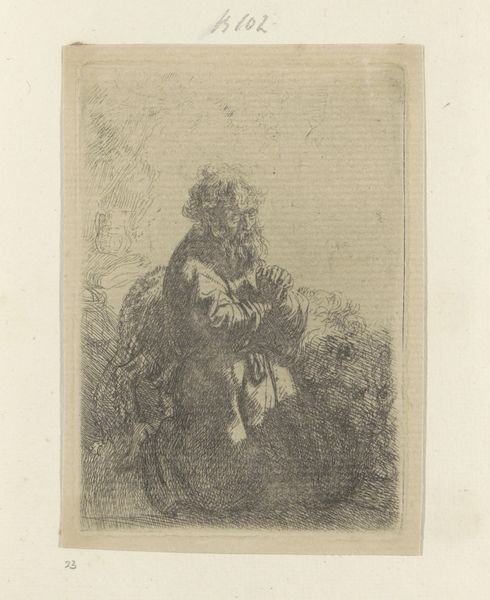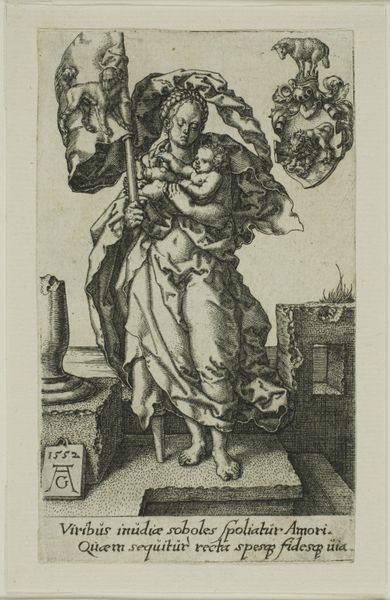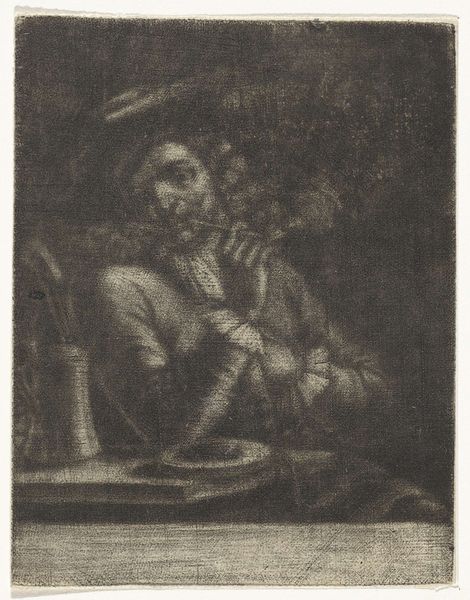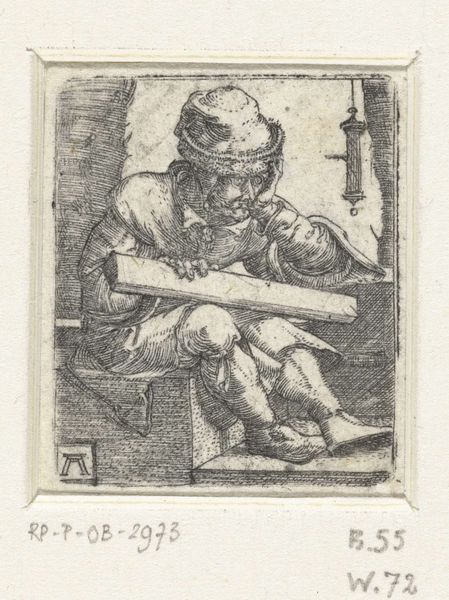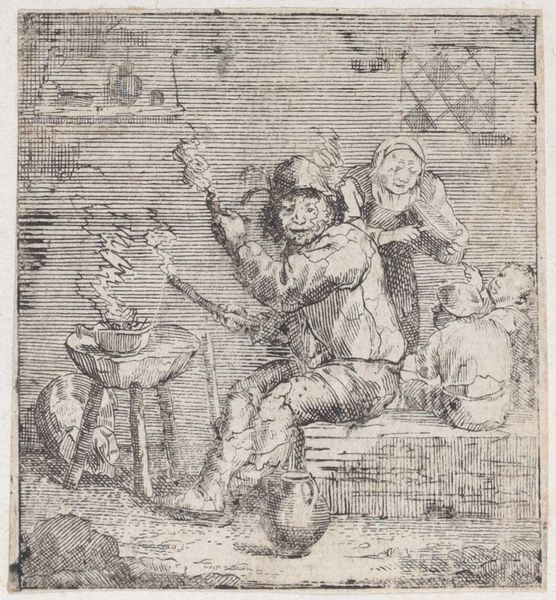
print, etching
#
portrait
#
baroque
# print
#
etching
#
history-painting
Dimensions: height 57 mm, width 73 mm
Copyright: Rijks Museum: Open Domain
This etched vignette with a portrait of Rembrandt was made by Simon Fokke in the 18th century. The method of etching is vital to understanding this image. By incising lines into a metal plate with acid, Fokke was able to create a design that could be reproduced many times over, through the printing press. Look closely, and you will see the characteristic crisp lines and fine details made possible by this technique. Of course, etching had a vital social dimension as well. It was a key technology in the rise of mass media and offered a way for artists to disseminate their work widely. In this case, Fokke used etching to celebrate Rembrandt, and by extension, elevate his own status within a lineage of artists. The very act of creating this vignette speaks to the cultural significance of printmaking, and its role in shaping artistic reputations in the 1700s. So next time you look at an etching, remember that it is not just an image, but also a product of its time, deeply intertwined with the social and economic forces of its day.
Comments
No comments
Be the first to comment and join the conversation on the ultimate creative platform.
